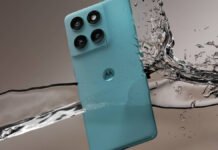Light-emitting diodes, commonly known as LEDs, are hugely efficient lights used as an alternative to traditional bulbs. A single LED is pretty tiny – less than 8 mm long – and is made up of a capsule with a chip inside. They can be used individually or as part of a network, and they save a fairly staggering amount of energy and money. According to the United States Department of Energy, LED lights only use about 20 to 25 percent of the energy regular light bulbs consume. Not only that, they last about 25 times longer. LEDs have at least as many uses as traditional florescent light bulbs, and they can also be used in remote controls and computer and television monitors. Some of the other benefits they offer might surprise you.
1. They’re Durable
It’s relatively easy to break a fluorescent light bulb – after all, they are made of glass. But LED lights have no glass components and no filaments to burn out, which contributes to their long life but also to their durability. Not only are they safer for security lights and surveillance cameras, they’re also built to withstand extreme weather, wear and tear, and fluctuations. This is good news for owners of boats, trucks, and other recreational vehicles who often deal with a shorter life span for their lighting because of the environmental factors and vibrations of the engine.
2. They’re Cool
If you’ve ever stood next to a desk lamp, you probably won’t be surprised that old-fashioned light bulbs release 90 percent of their energy as heat. But LED lights remain cool, and if you use them to replace a significant number of light fixtures in your house, you will actually reduce your cooling costs along with your electricity. With LED lights, you’ll be able to see how much energy you’re saving thanks to the color temperature scale which determines the temperature of your lights will be. Depending on the room, your home can be a mixture of warmer whites, natural whites, and cool whites.
3. They’re Bright
One of the biggest myths about LED light is that it isn’t as bright as light bulbs, but that’s because their emissions are measured in completely different ways. Typical lamps lose light due to the area where they’re placed, shades, filters, and other factors. They also emit light in all directions. LED lights are directional and have no need for filters, making them a lot clearer, brighter, and better-performing than their counterparts. This is why they’re great for car headlights and other times you need crisp illumination in the dark. And second and third-generation LEDs function with a higher current, so their brightness is being increased all the time.
4. They’re Cost-effective
This is where that 25 times longer shelf life comes in. Some people get scared off by the initial costs of installing LED fixtures without realizing that their durability and efficiency often lets owners recoup their money in less than 3 years. The cost of owning and maintaining florescent lights is significantly higher, simply because of how much they break and burn out. That doesn’t even take into consideration the amount of money you save on utility bills, which can be as much as 80 percent per year. As the technology becomes more widespread, LED installation costs are falling rapidly.
5. They’re Small
The tiny size of the LED has allowed it to become incredibly flexible and fit into spaces where normal light bulbs could never reach. You can use LEDs to light a refrigerator or an entire football stadium. The many uses of LEDs have streamlined the lighting industry, and now the tiniest flashlights or the biggest floodlights can be powered by the same clean energy. Not only that, LEDs are dimmable, so no matter if you’re using one or an array of hundreds, you can control how much light is emitted and in what direction.
For these reasons and more, LEDs are not a fad. They’re an important technological improvement that has incredible functionality and makes sense for everyone. If you’re wondering why these three letters appear so often on lamps and electronics choices these days, wonder no further.
Editor’s Note: Writer Dan Nielson is an avid blogger and off-road enthusiast. He understands visibility and cost is important when you need reliable off road lights.




